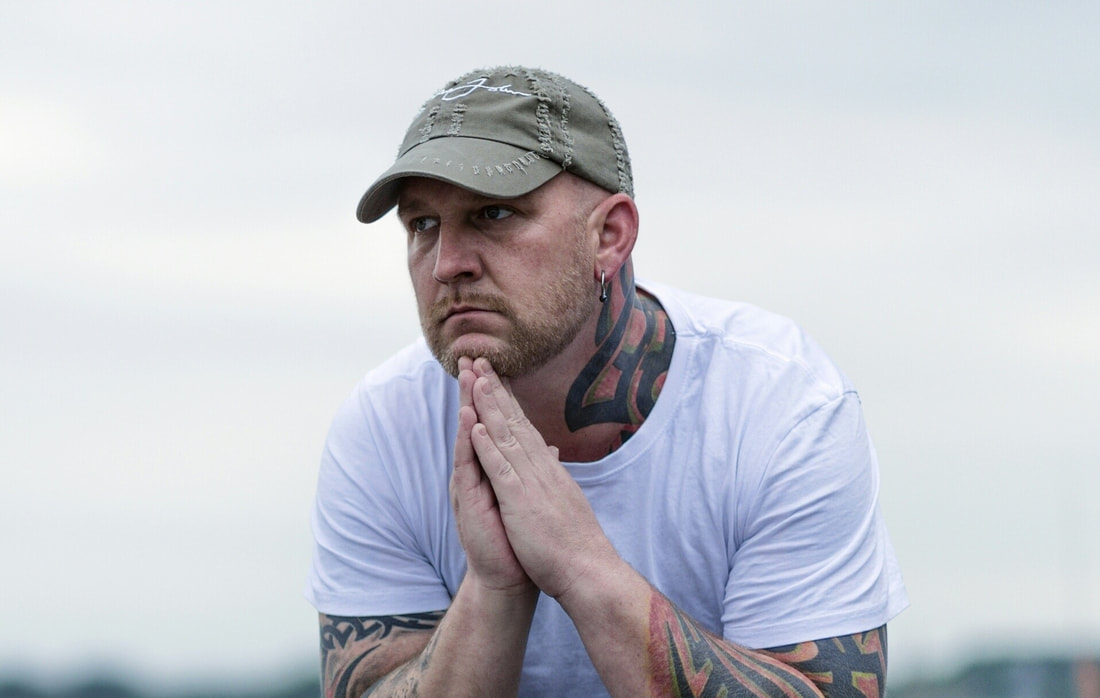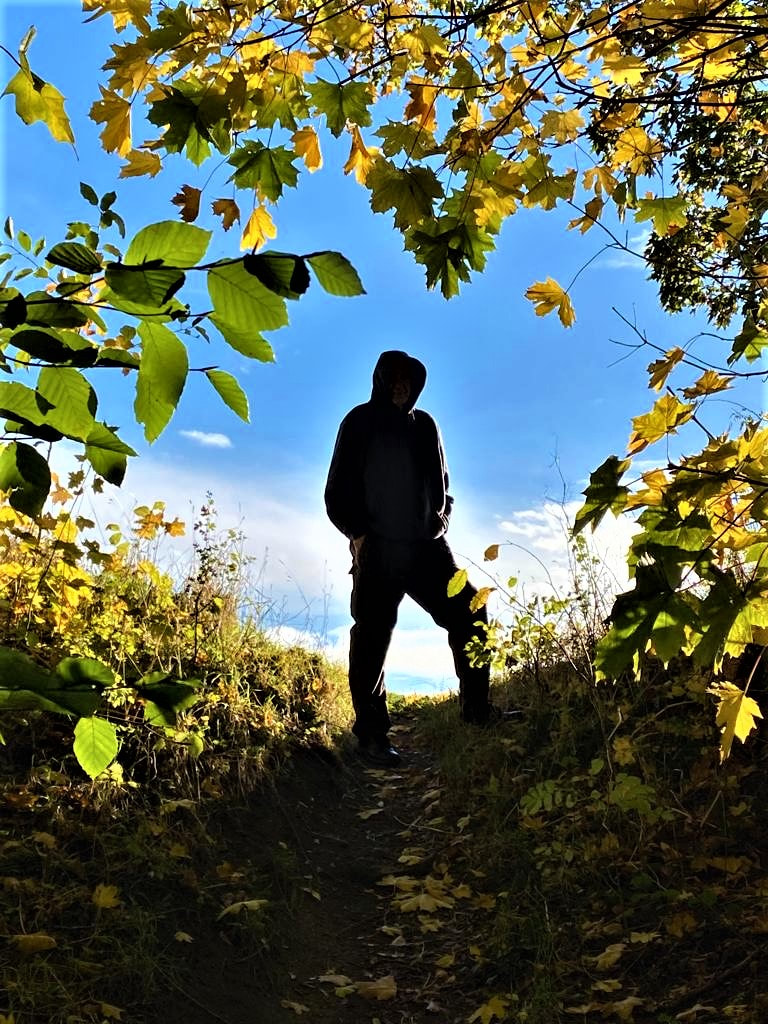|
‘Leadership is influence.’ (John C. Maxwell) It’s one thing to have insight. It’s another thing to exert influence on the basis of that insight. This is often a dilemma for leaders and professionals when seeking to influence change across dynamic, complex systems and relationships. After all, what if I can see something important, something that could make a significant difference, yet I can’t gain access to key decision-makers? Or what if, even if I can get access, they’re not willing to listen? What if people are so preoccupied by other issues that my message is drowned out by louder voices and I can’t achieve cut-through? Early in my career, I worked as OD lead in an international non-governmental organisation that was about to embark on radical change. I’d studied OD at university on a masters’ degree course and, based on that experience, could foresee critical risks in what the leadership was planning to do. I tried hard to get access to raise the red flags but, by the time I met with the leaders, it was too late. They had already fired the starting gun on their chosen programme. My concerns turned out to be well-founded, and the changes almost wrecked the organisation. I agonised for some time over why I’d been so ineffective at influencing their decisions. I learned some valuable lessons. Firstly, the view I held of my role – the contribution I could bring – was different to that of the leaders. I viewed myself as consultant whereas they viewed me as service provider. Secondly, the leaders had become so emotionally-invested in the change they had designed that they reacted defensively if challenged. They saw my well-meaning red flags as resistance rather than as a genuine desire to help. I would need to change my approach. Since then, I have practised building human-professional relationships with leaders and other stakeholders from the earliest opportunity. These relationships are built on two critical factors: firstly, respect for e.g. the studies, training, expertise and lived experience they bring to the table; and, secondly, empathy for e.g. the responsibilities, hopes, demands and expectations they face – both inside and outside of work. Against this backdrop, I’m able to pray, share my own insights and, where needed, advocate a change from an intention and base of support.
12 Comments
‘Learning is a treasure that will follow its owner everywhere.’ (Chinese proverb) Action Learning facilitator training with different participant groups always surfaces fresh and fascinating insights, emphases and challenges. This week’s ALA training programme was with a group of health professionals in diverse roles and fields of practice ranging from nursing, occupational therapy and podiatry to mental health, speech and language and education. I was inspired by their enthusiasm, personal ethics and genuine commitment to culture change. As we worked through Action Learning principles and techniques and how to enable groups to do it well, we explored 5 shift areas to facilitate a transition: from diagnosis to elicitation; from issue to person; from there-and-then to here-and-now; from first questions to follow-up questions; from reflection to agency. I’ll say a little about each of these dimensions with some practical examples below. The goal in each is to enhance participants’ learning and impact. From diagnosis to elicitation is a shift in who owns the issue from, say, ‘Tell me more about X so I can help you?’ to e.g. ‘What questions is X raising for you?’ From issue to person is a shift in focus from, say, ‘What’s the situation?’ to e.g. ‘What challenge is this situation posing for you?’ From there-and-then to here-and-now is a shift in temporal orientation from, say, ‘What have you tried?’ to e.g. ‘Given what you have tried, what stands out as the critical issue now?’ From first questions to follow-up questions is a shift in depth to move below and beyond, say, ‘How important is this to you?’ to e.g. ‘Given how important this is to you, what are you willing to risk?’ From reflection to agency represents a shift in traction from, say, ‘What sense are you making of this?’ to e.g. ‘What actions will you take to address this?’ A skill of the facilitator is to build the capacity of an Action Learning set to navigate these shifts in service of a presenter. 'I would rather have questions that can't be answered than answers that can't be questioned.' (Richard Feynman) When a person introduces an issue they are facing, we and often they are not always clear at the outset what underlying challenge that issue is posing for them. Rather than asking more questions about the issue itself, however, we could invite the person to reframe the issue as a question. ‘What questions come to mind as you think about this?’ ‘What question is this raising for you now?’ I worked with a strategy consultant who asked great questions; for example ‘What are the questions that, if we were to answer them, would enable us to make strategic decisions?’ In Action Learning sets, we could ask a presenter, for instance, ‘What are the questions you’d find most useful for us to ask?’ And, in high-challenge coaching, ‘What’s the question you’re hoping I won’t ask you?’ Priest-philosopher Thomas Aquinas observed that a good question can set a person off on a quest; a restless and intense journey of searching and discovery. It’s very different to providing a superficial answer that can close thinking down. I sometimes go one step further and ask, ‘What’s the question behind the question?’ It can raise tacit, subconscious and intuitive knowing into view. ‘To venture involves risks, but with the potential for great gain.’ (Fook & Askeland) A critical success factor in coaching and Action Learning is a willingness for participants to disclose opportunities or challenges they are facing, in order that they may learn through critical reflection and increase their sense of agency. At times, this may involve surfacing subconscious personal and cultural assumptions to enable self- and peer-examination. In doing so, we may draw on fields of learning and practice including Chris Argyris and Donald Schön’s double and triple-loop learning. The originator of Action Learning, Reg Revans, urged, ‘Swap your difficulties, not your cleverness’. Yet, although this can sound simple in principle, in some contexts it may run against norms and conventions of behaviour. In some cultures, for instance, to disclose a difficulty – especially in a group – could feel politically risky or even shameful. If a person were to share openly in that context, peers from the same cultural group could also feel anxious for that person and desire to protect them. This safeguarding instinct may be amplified in health and social sector contexts where participants may be used to working with vulnerable people and groups and-or have lived experience of trauma. If their professional training has evolved from or been influenced by counselling or therapy, they may find posing high-challenge questions uncomfortable or threatening; especially if they associate asking searching questions with, for instance, investigations or judgements re. access to services. In some cultures, to disclose personal rather than strictly situational challenges can be regarded as inappropriate and unprofessional. In some cultures, rationality and objectivity may be regarded as having higher value than intuition, subjectivity or emotion. Participants may find themselves preoccupied with problem analysis and formulating definitive answers and solutions, rather than enabling a person to sit with ambiguity, uncertainty and tension. A vital role for a coach or facilitator is to build trust, curiosity and critical reflexivity; drawing on any filters, biases and experiences that emerge as tools for transformation. ‘Collusion arises when the coach is only asking questions in a supportive fashion, being non-judgemental and listening, aligning with the other's worldview and failing to challenge or give feedback from a different perspective.' (John Blakey & Ian Day) In those days, we called it non-managerial supervision. These days, we’d call it coaching. My job involved meeting monthly with individuals who had been long-term unemployed. They were on placement, now, in a diverse range of community-based projects throughout London. The idea was to help participants discover and create the necessary confidence, competence and credibility to get paid employment. Some were supported with college training. All had the opportunity to gain valuable real-work experience. Sonja was a young black woman, a single parent on placement as a classroom assistant in a local community school. I loved her bright spirit and admired her remarkable resilience in the face of the many life challenges she faced. Every time we met, I would try to affirm and encourage her. I had been unemployed and I knew some of the psychological and emotional difficulties it could cause. My coaching focused on support, hoping it would help her to continue to persevere and, through that, to flourish in her future. Six months into Sonja’s one-year placement, we reviewed our sessions together: what was working well and what would most improve them as we moved forward. To my great surprise, Sonja challenged me to be more challenging: ‘Most mornings, I arrive at the school late. When I tell you it’s because I’m a single parent and it takes longer than I expect to get my kids ready before work, you accept my reasons and empathise with me. Yet, if I’m to get a job, I need to learn to stop making excuses and to get a grip on my life.’ I felt speechless, and yet this turned out to be a critical turning point in my coaching practice. Ana Karakusevic expresses this well: ‘If you equate listening with being silent, not disrupting the status quo, not interrupting another person’s monologue, not challenging their view of the world ...you’re not ready to be a coach.’ I read resources, including William Glasser’s provocative Reality Therapy, and shifted the balance and orientation of my coaching to offer challenge from a base of support. It transformed everything. This is a thought experiment. I choose these words deliberately, because a spirit of experimentation lays at the heart of Gestalt practice. It’s about learning by doing rather than, say, learning by thinking or learning by talking. That marks it out from conventional ways of coaching, facilitation and action learning (AL). It’s about trying something new, seeing what surfaces into awareness as we do so, then noticing any shift in our stance in relation to an issue we’re grappling with. It can be revealing, radical and powerful. Picture this. During an AL bidding round, each person depicts physically the essence of an issue that they’d like to work on. This could be, say, by standing and posing or acting out a scenario; drawing or painting a picture for the group to see; sharing an object that, for them, carries particular resonance with the issue they’re facing; presenting a song, poem, or piece of prose that expresses the core of the issue and any feelings they hold around it. The group then moves onto choosing a presenter. The choice of presenter could be influenced by, say, the felt sense of imminence or urgency in what a person has depicted; the degree of complexity that emerged as they sought to depict different dimensions; the scope for experimentation with actual changes in what that person portrayed. This would feel different to an ordinary rational evaluation of the relative merits of different bids and, instead, would call for courageous sharing of empathy, intuitions and gut-instinct discernment. At the exploration stage, the peers in the set would pose questions and reflections physically, by doing something that invites reflection and response from the presenter. This could be, for instance, to stand with the presenter, mirror his or her pose and ask them what they notice; move with the person to physical places where they can view their picture from a range of different angles; invite the person to act out any metaphors they had used in a song or poem then to see what emerges. Moving between exploration and action stages, the set would invite the presenter to try things imaginatively that could stretch the scenario and themselves in relation to it. This could involve, for instance, inviting the presenter to experiment with radically different poses to find one that best represents the stance they want to take; making drastic changes to the picture and noticing how that feels; reciting the song or poem using opposite metaphors to those they had used originally. This challenge phase of the Gestalt process is sometimes described as co-creating a ‘safe emergency’ with the presenter. It allows him or her to experiment with and experience, say, moving between extremes, or to very different places (physically; psychologically; systemically; emotionally) to where they might naturally prefer or default to. It enables them to push their own boundaries; to speak what may ordinarily feel unspeakable for them, to do what may normally feel un-doable for them. The final action stage would involve inviting the presenter to depict physically, say, their aspiration in relation to the issue they have presented; the physical stance that best represents that aspiration for them; any obstacles or enablers that they could envisage on route – using physical objects in the room (e.g. chairs) to represent them – then physically navigating through them; or physically to take what they choose as their next steps, adopting the posture or stance they will take as they do so. What have been your experiences of using Gestalt in Action Learning? I’d love to hear from you! [See also: Toys; Crab to dolphin; Let's get physical] ‘It’s a question of what the relationship can bear.’ (Alison Bailie) You may have heard the old adage, the received wisdom that says, ‘Don’t try to run before you can walk.’ It normally refers to avoiding taking on complex tasks until we have mastered simpler ones. Yet the same principle can apply in relationships too. Think of leadership, teamworking, coaching or an action learning set; any relationship or web of relationships where an optimal balance of support and challenge is needed to achieve an important goal. Too much challenge, too early, and we can cause fracture and hurt. It takes time, patience and commitment to build understanding and trust. I like Stephen Covey’s insight that, ‘Trust grows when we take a risk and find ourselves supported.’ It’s an invitation to humility, vulnerability and courage. It sometimes calls for us to take the first step, to offer our own humanity with all our insecurities and frailties first, as a gift we hope the other party will hold tenderly. It's an invitation, too, for the receiver to respond with love. John, in the Bible, comments that, ‘Love takes away fear’. To love in the context of work isn’t something soft and sentimental as some cynics would have us believe. It’s an attitude and stance that reveals itself in tangible action. Reg Revans, founder of action learning, said, ‘Swap your difficulties, not your cleverness.’ A hidden subtext could read, ‘Respond to my fragility with love, and I will trust you.’ I joined one organisation as a new leader. On day 3, one of my team members led an all-staff event and, afterwards, she approached me anxiously for feedback. I asked firstly and warmly, with a smile, ‘What would you find most useful at this point in our relationship – affirmation or critique?’ She laughed, breathed a sigh of relief, and said, ‘To be honest, affirmation – I felt so nervous and hoped that, as my new boss, you would like how I had handled it!’ In this vein, psychologist John Bowlby emphasised the early need for and value of establishing a ‘secure base’: that is, key relationship(s) where a person feels loved and psychologically safe, and from which she or he can feel confident to explore in a spirit of curiosity, daring and freedom. It provides an existential foundation on which to build, and enables a person to invite and welcome stretching challenge without feeling defensive, threatened or bruised. How do you demonstrate love at work? What does it look like in practice? Does risk-taking freak you out or give you a buzz? ‘If you risk nothing, then you risk everything.’ (Geena Davis) Snapping my leg sideways at the knee was a painful experience. It shattered my confidence too. I had been cycling when, unexpectedly, I hit a curb and flew off, unceremoniously, and hit the ground hard. The next year was a gruelling experience of trying to learn to walk again. The consultant told me, bleakly, that my biking days were over – as were my chances of ever hiking, swimming or climbing stairs again. I felt stunned, numbed, in shock. How could this have happened? This changed when I met Leanne, a remarkable Olympic athletes’ physiotherapist. She asked if I’d like to cycle off road again. I told her what I had been told and had believed – that it wasn’t an option. Nevertheless, she persisted and posed the same question again. I felt frustrated and confused. I had already answered. She asked what I’d be afraid of happening if I were to cycle again. I responded that I risked sustaining further injury to my knee - and that really scared me. This turned out to be a transformational conversation. ‘Every time you went out on a bike, you risked injury. Knowing what you know now, if you were to go back in time, would that stop you taking up cycling?’ ‘Not at all’, I answered. ‘Some of my best life experiences have been out on the mountain bike.’ ‘So,’ she replied, ‘It’s not about what’s possible so much as your attitude to risk. Will you allow that same risk of injury to prevent you doing what you love now?’ Six months later, I cycled the longest distance I had ever done off road. It was a breath-taking experience. I learned that risk isn’t just about balancing probability and impact. Positive risk-taking is about stance: taking what can feel like a leap of faith, being willing to crash and burn if it all goes wrong and, at the same time, to experience the possibility of discovering or achieving more than we had ever dreamed possible. When have you taken a positive risk? What did you learn? ‘Will not conform.’ (Christian Biker) Misfit. Outsider. Square peg in a round hole. Rocks the boat. Shakes the tree. Breaks the mould. You may have worked with one. You may be one. There are different types of deviance; configured around, 'acceptance or rejection of cultural values and goals' on the one hand and, 'acceptance or rejection of conventional ways to achieve them' on the other (Robert Merton). This means that, if you consider me disruptive, it’s likely to be because I challenge what you want and/or do, and/or how you do it. A deviant person can feel very uncomfortable to be around, unsettling as a colleague and difficult to manage. The answer to the question, ‘Is he or she a good fit?’ will be a resounding, ‘No’. A deviant person is a testing stone that reveals a contrasting norm; and he/she may galvanise a sense of shared identity and purpose among those who do fit: ‘We are X, not Y’. An oft-unquestioned assumption is that the defiant-dissident should change to fit in, and not that prevailing goals or culture should change. Yet constructive divergence can be a critical catalyst for transformation: ‘I’m proud to be maladjusted’ (Martin Luther King); ‘Well-behaved women rarely make history’ (Eleanor Roosevelt). Performance enhancers look for positive deviants that display exceptional qualities, then seek to replicate them. Psychological coaches help people to learn from their positive deviant experiences: ‘when the problem isn’t a problem’ (Mark Tyrrell). Radical leaders invite positive deviance to innovate, to break through. How deviant is your thinking and practice? How do you enable positive deviance in others? ‘You’re wrong, pal.’ (Simon) It was a different way to end a coaching conversation. Many leaders and managers would dance and wriggle around it, trying to find a less direct way of signalling disagreement, if at all. At least in UK culture, that is. Simon was coaching a colleague and decided to dispense with the niceties. After all, why waste time and beat around the bush if the answer is obvious? As far as Simon was concerned, the bloke was talking a load of nonsense and that was it. Enough. ‘You’re wrong, pal.’ In fact, the issue his colleague was presenting could have had some fairly significant consequences for a group of vulnerable young people. Simon felt accountable. He saw it as his job to put the bloke straight. The difficulty was how to do this in a coaching conversation. How to present a forceful-enough challenge whilst yet, at the same time, to retain his colleague’s responsibility to own and resolve it himself. This was confronting-coaching on steroids. Simple. ‘You’re wrong, pal.’ So, here’s the thing. What do you do as a leader, manager or coach if a person’s beliefs, values, behaviours, intentions or actions clash fundamentally with your own? What if you foresee serious consequences that they don’t see, or that don’t matter to them? What if it only becomes apparent in the midst of a coaching conversation? Do you stay silent, pose a question, offer an opinion, snatch the reins from them, or do something else? Would you ever assert: ‘You’re wrong, pal’? |
Nick WrightI'm a psychological coach, trainer and OD consultant. Curious to discover how can I help you? Get in touch! Like what you read? Simply enter your email address below to receive regular blog updates!
|













 RSS Feed
RSS Feed